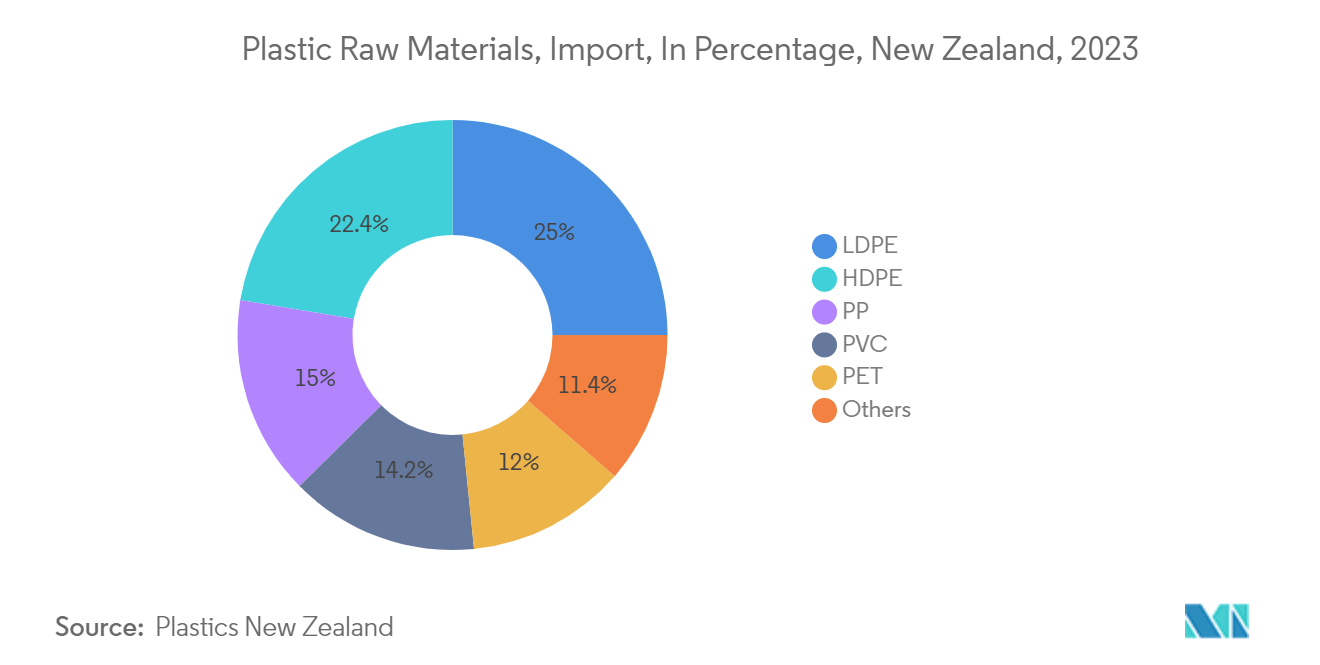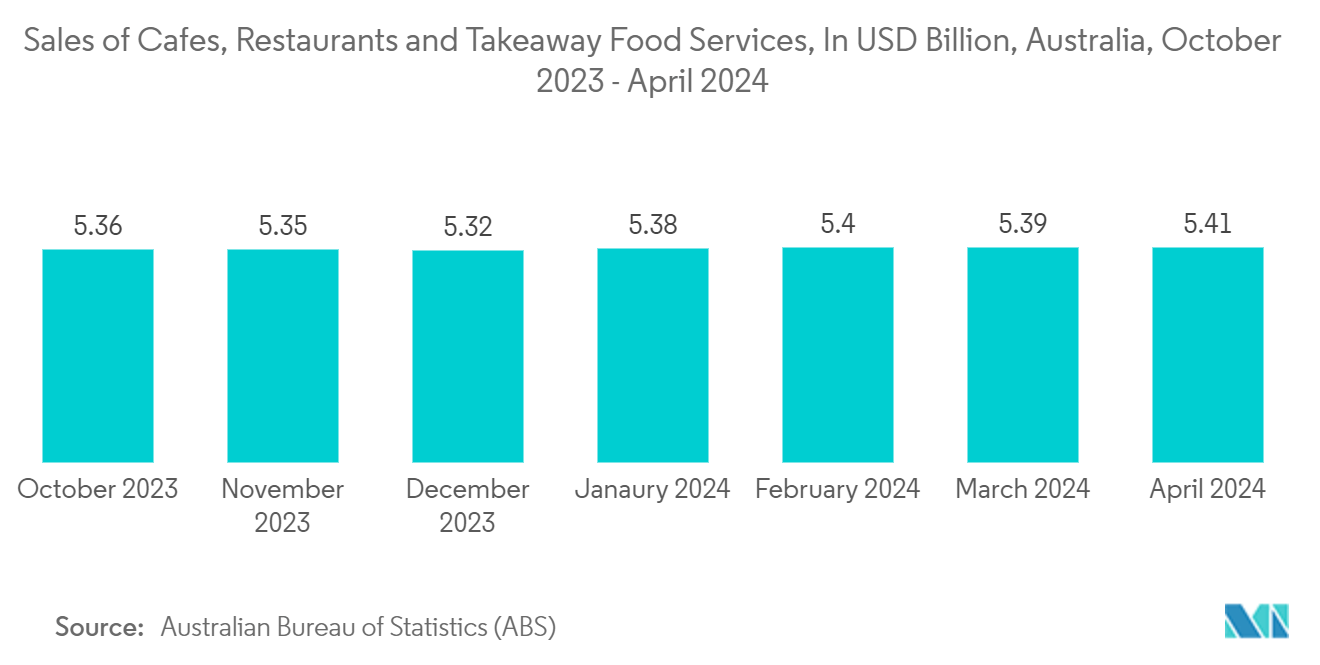Market Trends of Australia And New Zealand Rigid Plastic Packaging Industry
Bottles and Jars Segment is Estimated to Have the Largest Market Share
- Plastic bottles and jars crafted from polyethylene terephthalate (PET), polypropylene (PP), and polyethylene (PE) dominate the packaging landscape. Their durability and resistance to breakage ensure robust product protection, fueling their demand. Furthermore, these plastic bottles and jars excel in food packaging, thanks to their airtight seal against moisture, effectively preserving food freshness and amplifying demand.
- The region is experiencing a rising trend towards sustainable polyethylene terephthalate (PET) bottles in the beverage industry. A significant consumer pivot towards eco-friendly packaging largely drives this shift towards recycled PET (rPET) bottles. As manufacturers increasingly invest in sustainable plastic solutions, the market witnesses corresponding growth.
- Australia's burgeoning personal care and cosmetic sector is a key driver for the demand for plastic bottles and jars. The nation's inclination toward organic, vegan, and sustainable materials for skincare items such as creams and serums further fuels this demand. With Australia importing a significant portion of its cosmetics from the United States and France, the market sees a notable boost. Data from the International Trade Center (ITC) highlights a 17.31% surge in Australia's makeup product imports in 2023 compared to the prior year.
- New Zealand's increasing imports of plastics, essentially for packaging products, are propelling market growth in the country. As per Plastics New Zealand, LDPE (Low-Density Polyethylene) and HDPE (High-Density Polyethylene) lead the import charts, primarily serving the country's rigid plastic packaging needs.

Foodservice Segment Expected to Dominate the Market
- In Australia, a surge in tourism, urbanization, and the proliferation of food service providers, including restaurants, cafes, and pubs, fuel the demand for rigid plastic packaging. The US Department of Agriculture (USDA) notes a trend where consumers gravitate toward food establishments offering nutritious meal and drink choices, with a notable shift toward low or no-alcohol options. This health-conscious pivot, emphasizing fresher and healthier food choices, is poised to bolster market growth.
- New Zealand's burgeoning tourism and hospitality sector invigorate its food service industry. Echoing USDA insights, as consumers lean towards healthier food options, cafes are evolving their menus. This evolution includes a pivot to meat alternatives, coconut-based sweets, and an expanded salad variety, all driving the demand for rigid plastic packaging, especially for takeaway food containers.
- Regional manufacturers, including Primo Plastics and Forward Plastics Ltd, are catering to the food industry's packaging needs. They offer diverse packaging containers and customize them in various colors, shapes, and sizes, further amplifying product demand.
- Sales in Australia's cafes, restaurants, and takeaway services are on the rise due to many convenient and affordable fast food options. This uptick, from USD 5,302.5 million in April 2023 to USD 5,394.7 million in April 2024, is driving a heightened demand for plastic trays and containers. The Australian Bureau of Statistics (ABS) highlights this trend, underscoring its contribution to the market's growth.


